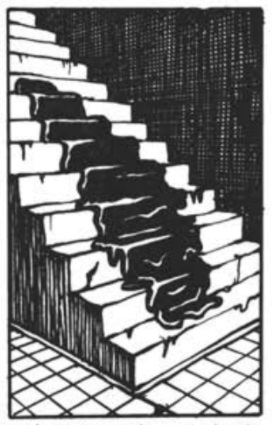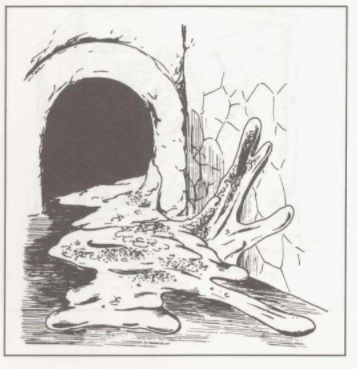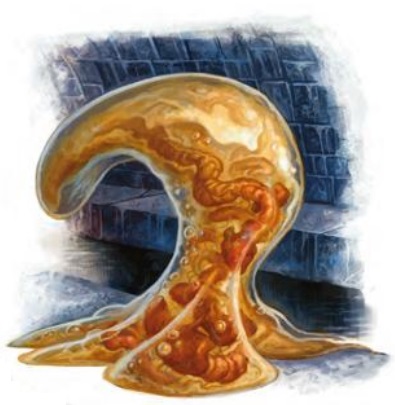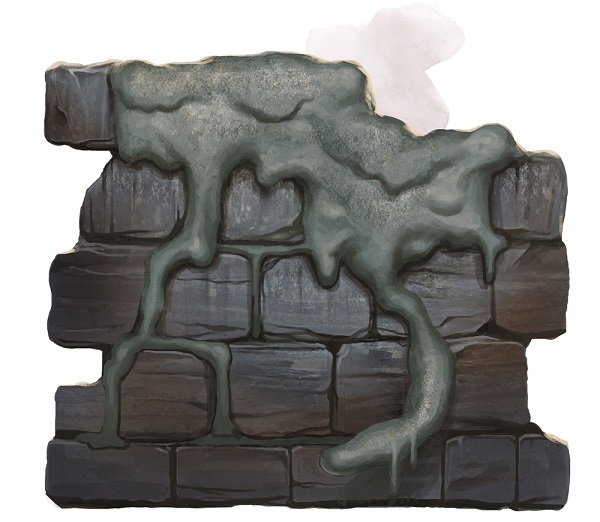D&D Monster Spotlight: Gray Ooze
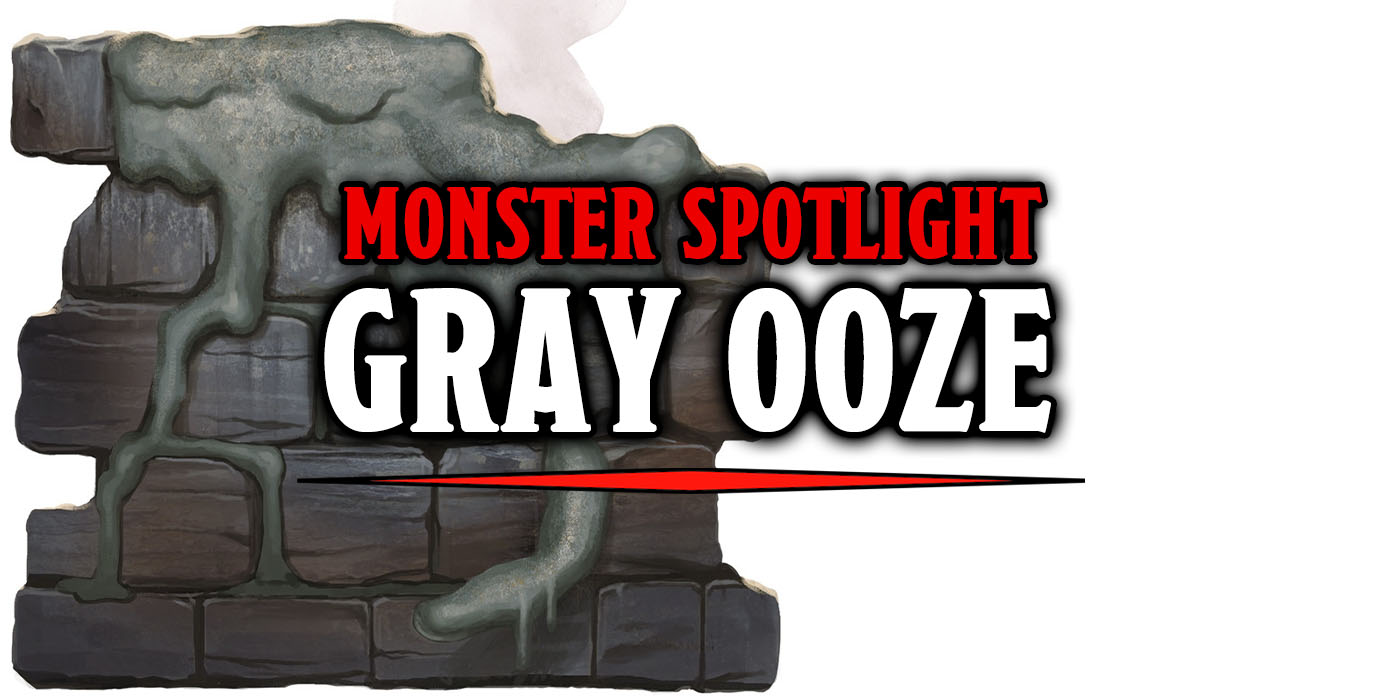
There is a good chance that your party may not even notice the Gray Ooze until it’s already eating through your armor or bones.
First Edition
Perhaps one of the most insidious things about the Gray Ooze is how nonthreatening it looks at first glance. Found mainly in subterranean dungeons or caves, it looks like wet stone or normal underground cave puddles and may be the sort of thing your average adventurer ignores at first. Unfortunately, the Gray Ooze corrodes metal, only seems to take damage from lightning based spells, and has latent psionic abilities. Your party may not have an issue defeating something of the Gray Ooze’s threat level, but there is a good chance that it will get a few surprise hits and maybe do some damage to your party’s armor before you even know what’s happened.
Second Edition
Luckily, Second Edition let’s us know that the Gray Ooze can only climb the stairs in one direction, so if you’re being crept after by between six inches and twelve feet of grossness, head for higher ground. These creatures can slide and drip along floors, but can’t climb calls or ceilings, making up the most safe direction to go in when a Gray Ooze is involved. If it does get a member of your party though, the Ooze will reproduce after a large meal by budding or growing a small pod that it leaves behind so that the bud may mature into a brand new small Gray Ooze in two or three days time.
Third Edition
Until Third Edition I hadn’t given much thought to how much a Gray Ooze may weigh or the fact that it could perhaps grow. But apparently they can grow up to ten feet in diameter and six inches in thickness – thought it doesn’t say how long this growth could take – and a typical Gray Ooze weighs somewhere in the area of 700 pounds. Clearly, this is a terrifyingly large size for an ooze who’s combat style includes not only acidic like metal corrosion and grabs but constriction and body slams as well. Additionally, the Gray Ooze is sometimes not gray at all but transparent and can require a DC 15 spot check to notice.
Fourth Edition
Every edition seems committed to making the Gray Ooze worse than the edition before, and fourth is no exception by introducing this creature as “wretched piles of stinking pus, Gray Oozes seek to dissolve the bones of other creatures into slime, which they use to increase their bulk.” They are also lumped in with a number of other Oozes and given very little information of their own, but specific to Gray Oozes is the tactic of “softening up” their foes with bone melt move so that future attacks are move likely to hit. It doesn’t say anything about acid or melting metal, but honestly melting through bone may be more scary for many flesh and blood creatures.
Fifth Edition
Once again, the Gray Ooze is given only a little information of its own while sharing a page with some of its oozy brethren, but Fifth Edition manages to give us some interesting ooze information nonetheless. Gray Oozes specifically are stone turned oozish through the powers of chaos and moves in a way that is both liquid and snakelike. They once again corrode metal, but are also amorphous and able to squeeze through any space as narrow as one inch wide with no effort. They are also still nearly impossible to distinguish from normal and not dangerous wet dungeon rock and have an affinity for inflicting bludgeoning damage. Luckily, the Gray Ooze has a very low armor class at eight and only twenty two hit points, so once your party realizes what you’re up against it will hopefully be no problem to dispooze of the ooze.
Have you encountered a Gray Ooze in your D&D adventures? Did your party recognize it right away, or was it hiding in plain sight? Which Ooze type is your favorite? Let us know in the comments!
Happy Adventuring!

